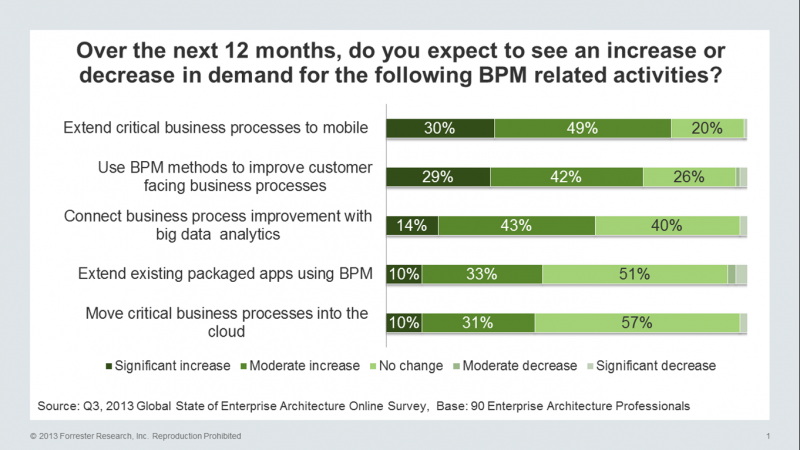It’s Time To Reinvent BPM For The Age Of The Customer
Over the last 12 years, I've seen – and helped drive – a lot of change in the BPM market. First, I watched BPM move from a heavy focus on integration to a greater focus on collaboration and social interaction. And then, BPM expanded from highly structured and ‘automate-able’ processes to address unstructured, more dynamic business processes. It is safe to say that over the last decade, demand for BPM was driven by key characteristics of the "Information Age" – a relentless drive towards improving the flow and sharing of information across people and systems.
Now, the most compelling business cases powering fresh demand for BPM focus on characteristics of the new age we are moving into – what Forrester calls the "Age Of The Customer." If you look closely at most of today’s BPM initiatives, they tend to hide behind an imaginary firewall that separates what external customers experience and what internal business operations feel they need to be efficient. In this new age, business leaders are waking up to the realization that they can no longer divorce process improvement from the people and systems that touch customers, partners, and customer-facing employees.
In a recent survey, Forrester found that 30% of respondents expect to see a significant increase in demand for BPM to extend critical business processes out to mobile. And another 29% expect a significant increase in using BPM to improve customer-facing business processes. Both of these use cases represent key drivers for process differentiation in the Age Of The Customer. However, through inquiries and client engagements, we see many companies struggling to build strong business cases for BPM that address these new scenarios.

In my recently published report, "Building The Case For Your BPM Initiative", I worked alongside my colleague Derek Miers to provide an updated view on how to build the business case for BPM. In this report we outline best practices and emerging strategies for aligning the business case for BPM with emerging Age Of The Customer imperatives. To build a customer-focused BPM business case, you will need to:
- Expand the sponsor list beyond “the usual suspects” – Instead of only recruiting sponsors that tend to be motivated by process improvement (such as CFOs, CIOs, and COOs), BPM leaders need to invest time educating and interviewing customer-facing executives, such as Chief Marketing Officers (CMOs) and sales leaders. The key is to surface process pains that these leaders see standing in the way of capturing new customers and new markets.
- Start small, think big, learn fast – The mantra for success with BPM has always been “Start small, think big, move fast.” However, customer-facing process improvement is more about learning and adapting to feedback from external customers – the real stakeholders.The key to building a customer-facing business case for BPM is to gain budget and buy-in for a “build-measure-learn” loop that is focused on customer feedback (similar to key principles of the Lean Startup methodology).
- Shift the business case to focus on growing revenue – The secret ingredient to gaining buy-in with customer-facing executives is to zero in on how you will connect process improvement to revenue growth. This means you will need to demonstrate how redesigning business processes for convenience and simplicity directly drive business growth and increased customer engagement.
It’s possible to develop an Age of the Customer business case for BPM. But as we found in our research, you can’t do it the old way.